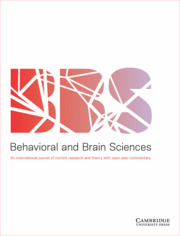Article contents
Constructing understanding, with feeling
Published online by Cambridge University Press: 01 February 2004
Abstract:
We explore three types of criticisms of our theory on the development of children's social understanding. We reject suggestions that we offer nothing new to traditional theories of development or recent “social” accounts of “theory of mind.” Second, we take the point that there are grounds for improving our account of dyadic interaction in infancy but reject claims that we have not sufficiently accounted for how we incorporate the notions of criteria and structure into the theory. Third, we accept that the epistemic triangle, as defined, would benefit from an affective dimension and such a formulation could be used to describe the dynamic of developmental change from infancy to beyond early childhood. We still feel that the combination of Wittgenstein, Vygotsky, and Piaget remains as an antidote to the flaws in current “theories of mind” approaches to social understanding.
Information
- Type
- Authors' Response
- Information
- Copyright
- Copyright © Cambridge University Press 2004
References
- 6
- Cited by

